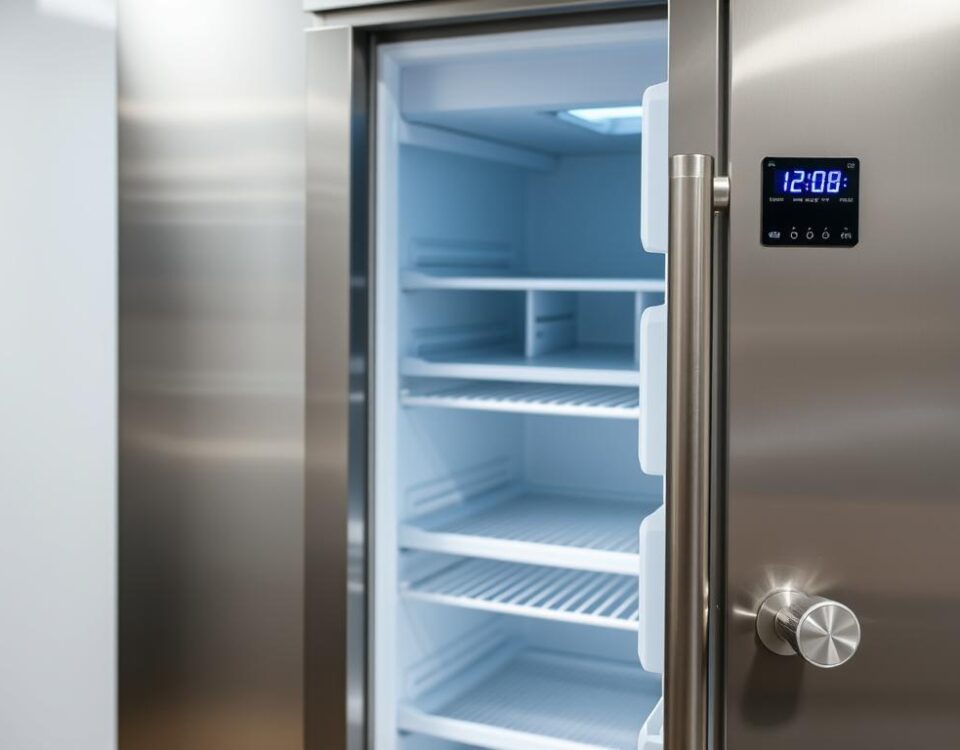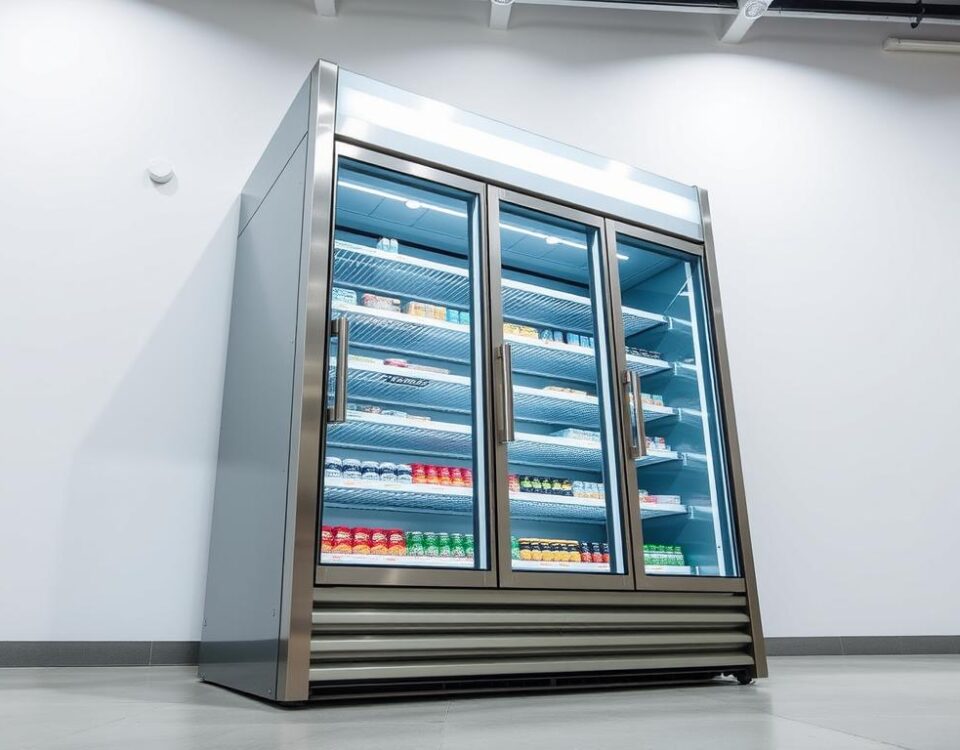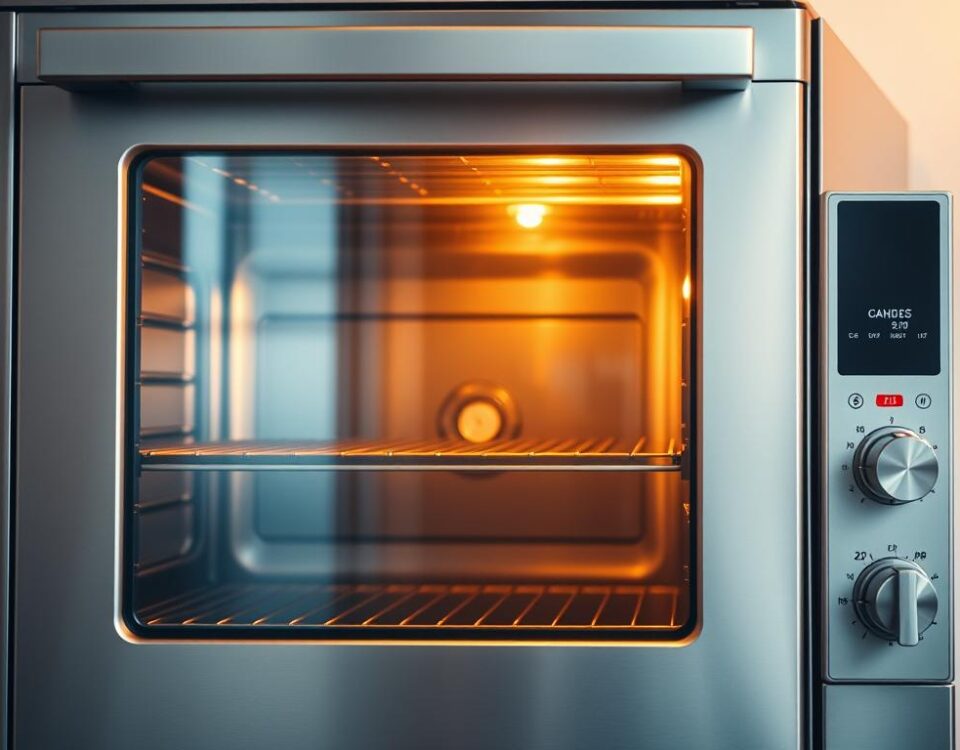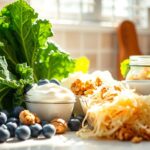
7 Simple Foods That Heal a Damaged Digestive System
May 20, 2025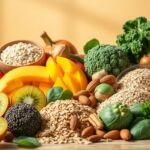
Best Foods to Prevent Constipation Naturally
May 21, 2025Did you know 21 million Americans deal with the stomach flu every year? That’s like the entire population of Florida feeling queasy at once. When I was curled up on my bathroom floor last winter, I wished someone had handed me a clear roadmap for what to eat—and what not to touch.
Navigating meals after a stomach bug isn’t just about stopping nausea. It’s about giving your body the gentle care it needs to heal. I learned this the hard way, swapping broth for toast too soon and regretting it instantly. Trust me—your gut deserves better.
This guide isn’t a list of rules. It’s what worked for me during those foggy days when even water felt risky. We’ll talk about simple strategies to calm your system, stay hydrated, and slowly rebuild strength. Because when you’re weak but starving, every bite matters.
Key Takeaways
- Hydration is critical—sip fluids like electrolyte drinks or herbal teas.
- Start with bland, easy-to-digest options like bananas or plain rice.
- Avoid dairy, caffeine, and spicy foods until symptoms fully pass.
- Listen to your body’s signals—don’t rush back to normal meals.
- Small, frequent portions reduce strain on your digestive system.
Understanding Viral Gastroenteritis and Its Impact
Every year, millions experience sudden nausea and cramps, unaware they’re battling viral gastroenteritis. This intestinal inflammation—often called “the stomach flu”—has nothing to do with actual influenza. The confusion cost me dearly during my last bout, when I mistook it for food poisoning.
What Is the Stomach Flu?
Medical experts define viral gastroenteritis as an infection attacking the intestines. Unlike seasonal flu caused by influenza virus, it spreads through contaminated surfaces or food. The CDC reports norovirus alone causes 19-21 million U.S. cases annually—enough to fill 300 football stadiums.
Recognizing Common Symptoms
Early signs hit like a tidal wave. I remember first feeling queasy, then waves of vomiting diarrhea within hours. Other symptoms include cramping and low fever. These usually last 1-3 days, but dehydration risks linger longer.
Spotting these symptoms early helps you act fast. During my worst episode, recognizing the pattern helped me start hydration strategies before things spiraled. Now I keep oral rehydration salts handy—just in case.
Emphasizing Hydration: Fluids That Help Me Heal
Dehydration sneaks up faster than you’d think—I learned this the hard way after my third dizzy spell post-illness. Prioritizing fluids became my lifeline, especially when even swallowing felt like a chore. Here’s what worked when my body needed gentle support.
Clear Liquids and Ice Chips for Early Healing
I started with tiny sips of room-temperature water—too much too fast made nausea worse. Sucking ice chips gave steady hydration without overwhelming my system. Homemade broths (think boiled veggies or fresh produce scraps) added nutrients when solid meals weren’t an option.
My doctor once told me, “Clear liquids are like training wheels for your gut.” I stuck to:
- Herbal infusions (chamomile or fennel)
- Diluted apple juice
- Plain gelatin
Electrolyte Beverages and Herbal Teas
After 24 hours, I introduced electrolyte drinks to replenish sodium and potassium. Coconut water worked better for me than sugary sports options. Ginger tea became my go-to—its warmth eased cramps, while peppermint leaves settled queasiness.
Key tips I live by:
- Mix electrolyte powders with water for faster absorption
- Avoid caffeine—it dehydrates
- Steep teas lightly to prevent bitterness
These fluids didn’t just quench thirst—they rebuilt my energy one careful sip at a time.
Stomach Virus Recovery Foods: Essential Choices for Rebuilding Strength
My first real meal after days of broth involved burnt toast and applesauce. Not glamorous, but that combo became my lifeline. When your system’s fragile, every bite needs to earn its place.

The Power of Simple Combinations
Doctors often suggest the BRAT diet—bananas, rice, applesauce, toast. Here’s why these work:
- Bananas replenish potassium lost during dehydration
- White rice acts like a sponge for excess stomach acid
- Unsweetened applesauce gives quick energy without harsh fibers
- Dry toast absorbs irritation like a culinary peace treaty
I once rushed this phase with scrambled eggs—big mistake. These basic items became my safe harbor until my gut settled.
Beyond the Basics
When ready to expand, try:
- Steamed carrots (mashed for easier digestion)
- Oatmeal cooked in water
- Saltine crackers
A nurse friend once told me, “Bland doesn’t mean boring—it means being kind to yourself.” I kept portions small, eating every 2-3 hours instead of traditional meals.
The real lesson? Let your body guide the pace. Some days I handled rice but not toast. Other times, applesauce was too sweet. Flexibility within the diet framework made all the difference.
Navigating the Return to Solid Foods
Reintroducing solids felt like teaching a toddler to walk—wobbly but necessary. I waited until clear liquids stayed down for six hours straight. My rule? If I could sip broth without consequences, maybe a saltine crumb wouldn’t trigger chaos.
https://www.youtube.com/watch?v=FV82_5_srWs&pp=ygUMI2RvZ2RpYXJpaGlh
When I Start Eating Solid Foods Again
Timing matters more than hunger cues. Once, I mistook fleeting nausea relief for readiness and regretted it with dry toast. Now I follow the 24-hour test: after keeping fluids down, wait half a day before trying food. Start with a single cracker. If that sits well, add a spoon of plain rice.
Tips for a Gradual Diet Transition
Portion control became my secret weapon. I’d divide a brat diet portion into quarters, eating one piece every 30 minutes. Steamed rice mixed with broth softened textures for easier digestion. A nurse once told me, “Your gut isn’t lazy—it’s healing. Treat it like a scraped knee needing bandages, not workouts.”
Here’s what worked:
- Alternate liquids and solids—sip water between bites
- Stick to room-temperature food to avoid shocking the system
- Introduce one new item daily (like adding applesauce to crackers)
Patience paid off. By day three, I could handle a full brat meal: mushy bananas, unsalted rice, and dry toast. But I still avoided spices like they owed me money.
Bland Diet Options to Soothe an Upset Stomach
My kitchen became a laboratory for gentle nourishment after days of surviving on ice chips. The right combinations could calm turbulence or reignite chaos—I discovered this through trial and error. Bland doesn’t mean flavorless—it’s about strategic choices that comfort without challenging sensitive digestion.
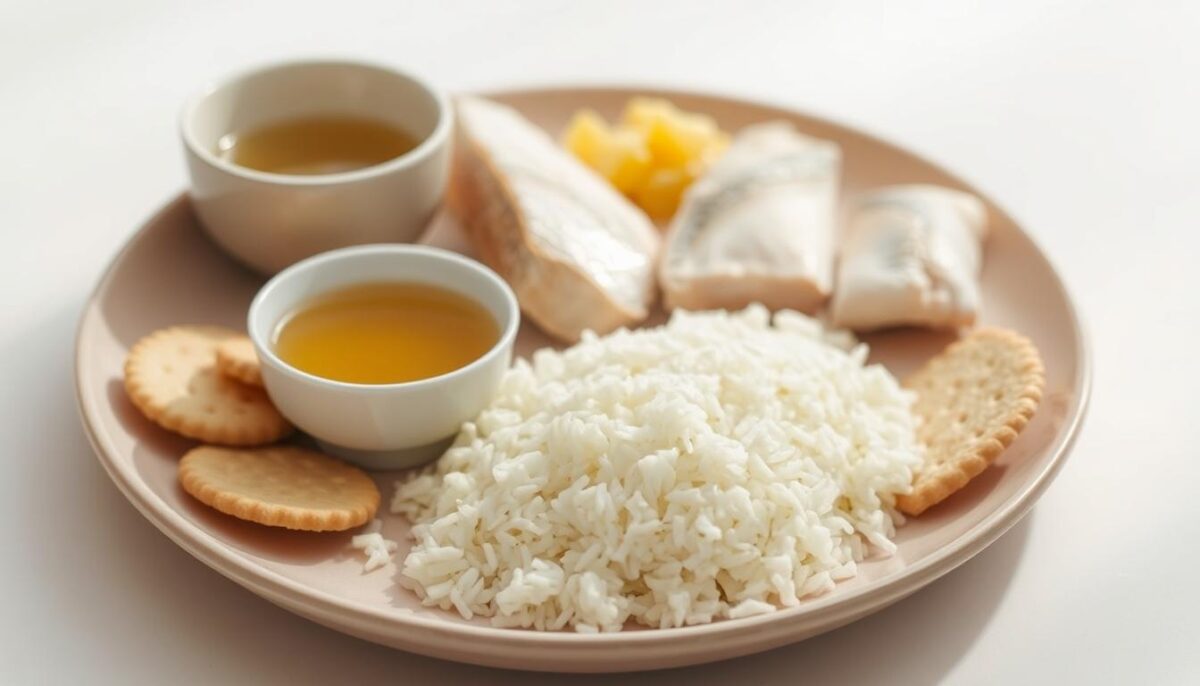
Broth-Based Soups and Light Proteins
Chicken broth with soft carrots became my midday anchor. Bone broth offered collagen for gut repair, while vegetable versions provided minerals without heaviness. A dietitian once told me, “Think of soups as liquid bandages—they coat and protect.” When ready, I added:
- Shredded skinless chicken (boiled, not roasted)
- Silken tofu cubes
- Well-cooked egg whites
These proteins stayed mild but prevented muscle loss during weakness. I avoided beef or beans—their complexity often backfired.
Simple Carbohydrates Like Plain Potatoes and Rice
White rice transformed into my edible security blanket. Boiled potatoes (peeled and unsalted) absorbed excess acid that fueled diarrhea. During one rough night, mashed sweet potatoes eased vomiting urges better than medication. Key benefits:
- Instant energy without fermentation risks
- Neutral pH balances irritation
- Soft textures prevent mechanical stress
I paired these carbs with herbal drinks—ginger infusions or mint tea—to maintain staying hydrated. A nurse friend advised, “Sip beverages between bites—it’s teamwork for healing.”
This approach taught me that simplicity isn’t restrictive—it’s the fastest path back to normalcy. Every bland bite became a stepping stone toward regained strength.
Recognizing Foods to Avoid During Recovery
I once celebrated feeling better with a scoop of vanilla ice cream—biggest mistake of my healing journey. Within minutes, cramps returned like uninvited guests. Some products masquerade as safe choices but sabotage progress when your system’s vulnerable.
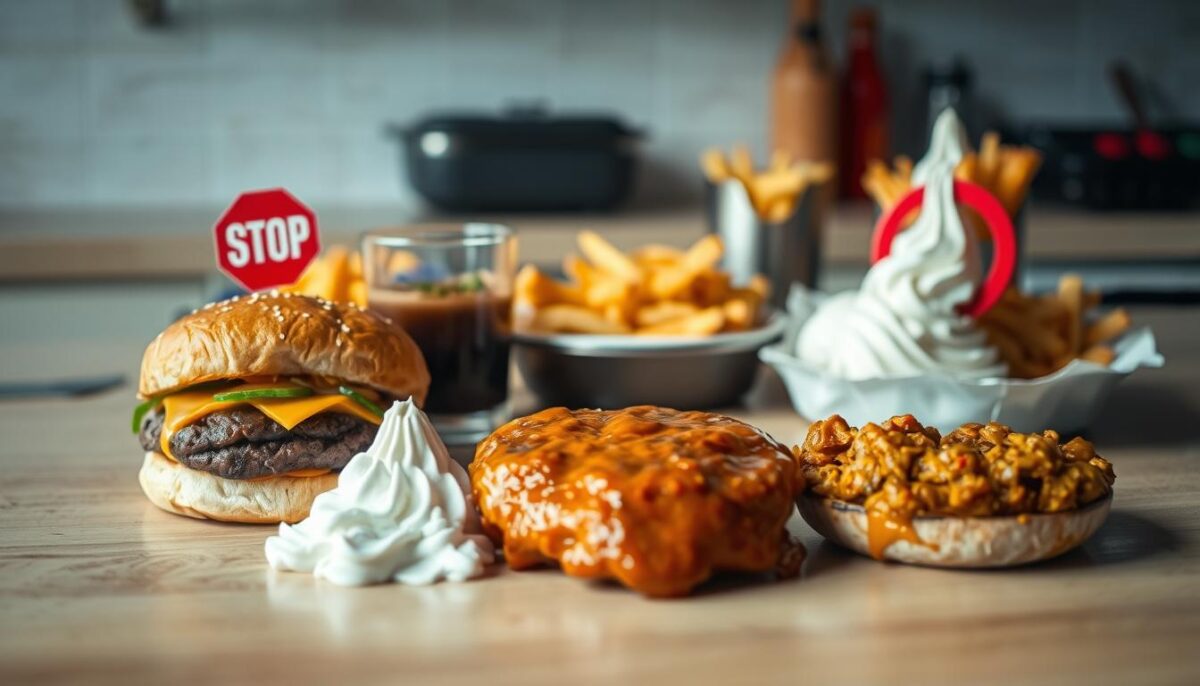
Sugar became my sneaky enemy. That apple juice I thought was harmless? It fueled bathroom sprints for hours. Sweetened drinks and snacks ferment quickly, creating gas that aggravates cramping. Even natural sugars in fruit concentrates can overwhelm healing intestines.
Dairy products like cheese or yogurt—despite their probiotics—backfired spectacularly. A nurse explained, “Lactose requires enzymes your body isn’t producing enough of right now.” I swapped milk for almond alternatives until my gut could handle the real deal.
High-fiber items surprised me most. Raw veggies and whole grains I usually love turned into sandpaper for my insides. Their rough texture irritates sensitive linings, while insoluble fibers speed up digestion—bad news when you’re already racing to the toilet.
Processed snacks? Absolute landmines. Chips and cookies contain oils and preservatives that spark inflammation. I learned to read labels like a detective, avoiding anything with unrecognizable ingredients. My rule: if it comes in neon packaging, it probably belongs on the “no” list.
Patience here isn’t just virtuous—it’s practical. Every avoided trigger meal became a stepping stone toward lasting relief.
Additional Strategies for a Speedy Recovery
Rebuilding strength after illness isn’t just about what you eat—it’s how you care for your whole system. I discovered that ignoring fatigue or pushing through discomfort only delayed my progress. True healing requires equal parts patience and awareness.
Rest and Monitoring My Symptoms
Sleep became my secret weapon. I scheduled naps like important meetings, letting my body dictate rest needs. Tracking symptoms in a notebook helped spot patterns—like afternoon nausea spikes signaling dehydration.
Watch for these red flags in children:
| Symptom | Action | Timeline |
|---|---|---|
| Persistent vomiting | Call pediatrician | 12+ hours |
| Dry mouth | Increase electrolytes | Immediately |
| Lethargy | Seek urgent care | Any duration |
Making Adjustments Based on How I Feel
I stopped forcing “shoulds.” If rice caused bloating, I switched to oatmeal. When fatigue hit, I canceled plans without guilt. Research shows flexible approaches heal faster than rigid routines.
For children, I learned to:
- Offer smaller portions more often
- Use popsicles for hydration
- Watch for subtle energy shifts
Listening to my body transformed recovery from a battle to a collaboration. These strategies protect long-term health better than any quick fix.
Integrating Safe Fluids and Hydrating Foods Throughout Recovery
Three days into my healing journey, I discovered watermelon cubes could hydrate better than water alone. This juicy revelation changed how I approached nourishment—hydration isn’t just about drinking, but eating smart too.
High-water fruits became my edible hydration heroes. Strawberries (92% water) and peeled cucumbers offered vitamins without overwhelming my system. A nutritionist friend noted, “Foods drinks work best when they’re partners—sip herbal tea while nibbling melon slices.”
When reintroducing proteins, boiled chicken breast saved me from weakness. Shredded into broth, it provided muscle-supporting nutrients without heavy fats. I paired it with steamed zucchini—another hydrating veggie that’s 95% water.
My strategy for eat stomach-friendly meals:
- Alternate bites of poached chicken with coconut water
- Freeze blended berries into soothing ice pops
- Use bone broth as both drink and cooking liquid for rice
Balancing solids and liquids kept meals nutrient-dense yet gentle. I learned that foods drinks complement each other—like using mint-infused water to wash down bland crackers. This approach helped maintain energy without triggering setbacks.
Even after symptoms faded, I kept hydrating fruits in rotation. Cantaloupe cubes became my go-to snack, while chilled herbal teas replaced sugary beverages. As my dietitian advised, “The content of your plate should heal first, delight second—for now.”
Conclusion
Healing from gut turmoil taught me patience tastes better than any forbidden snack. What worked? Sipping electrolytes hourly and letting plain rice rebuild my strength brick by brick. When dehydration whispers through dry lips or dizziness, respond fast—your body’s talking.
Those first tentative bites matter most. I stuck to steamed carrots and broth until diarrhea vomiting stopped gatecrashing my progress. Avoiding triggers like dairy or spices wasn’t deprivation—it was self-care in edible form.
To anyone rebuilding after illness: Your gut’s not broken, just healing. Swap rushed meals for mindful nibbles. Let thirst guide your sips, not schedules. Many people recover faster when they treat each meal like a peace treaty with their body.
Remember—this phase passes. One day, you’ll enjoy pizza again. For now, let gentle foods and steady hydration light your path back to wellness. Trust me, your future self will thank you for this temporary discipline.
FAQ
How long should I wait before eating solid foods after vomiting stops?
I wait 4–6 hours after my last episode to try small bites of bland items like saltines or toast. Starting too soon can irritate your gut again.
Can I drink coffee or soda while recovering from gastroenteritis?
I avoid caffeine and carbonated drinks—they worsen dehydration. Herbal teas like chamomile or peppermint are gentler and help settle nausea.
Are probiotics helpful during stomach flu recovery?
I’ve found yogurt with live cultures (if dairy is tolerated) or probiotic supplements can restore good bacteria. Wait until vomiting subsides to introduce them.
Why is the BRAT diet recommended, and when should I stop it?
Bananas, rice, applesauce, and toast are low-fiber, binding foods that ease diarrhea. I transition to proteins and veggies after 24–48 hours to rebuild strength.
Is it safe to take anti-diarrheal medication right away?
I consult a doctor first—some medications can trap the virus in your system. Hydration is my priority unless a healthcare pro advises otherwise.
Can I use sports drinks like Gatorade for electrolyte replacement?
I dilute them with water—their high sugar content can worsen diarrhea. Pediatric electrolyte solutions like Pedialyte work better for kids and adults.
How do I know if I’m becoming dehydrated?
I watch for dark urine, dizziness, or dry mouth. Sipping small amounts of broth or oral rehydration salts helps me stay ahead of fluid loss.
Are scrambled eggs okay to eat during recovery?
I add eggs once I tolerate bland carbs. They’re easy to digest and provide protein—just skip butter or heavy seasoning initially.
When should I seek medical help for viral gastroenteritis?
I call a doctor if symptoms last over 3 days, I see blood in stool, or can’t keep liquids down. Severe pain or fever above 102°F also needs urgent care.
Can I eat frozen popsicles to stay hydrated?
Yes! I opt for ones made with real fruit juice or electrolyte solutions. They’re soothing for a sore throat and help replace fluids slowly.

